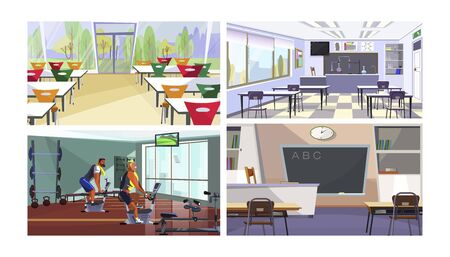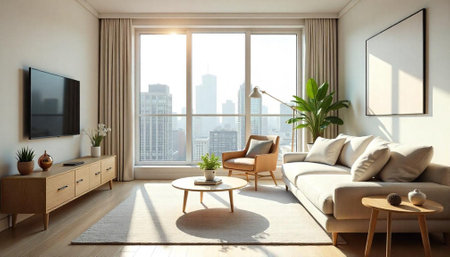Defining Scandi-British Fusion: A Contemporary Aesthetic
Scandi-British fusion in urban flats is a design movement that elegantly marries the clean, understated lines of Scandinavian minimalism with the storied charm and subtle eccentricities of British heritage. This contemporary aesthetic emerges as city dwellers seek spaces that balance efficiency and warmth, reflecting both continental simplicity and distinct local character. By drawing on the Nordic principles of functionality, neutral palettes, and natural materials, while also embracing quintessentially British elements such as textured fabrics, antique accents, and a touch of eclecticism, this fusion creates interiors that feel both fresh and familiar. The result is an environment where calm order meets curated personality—a celebration of light-filled openness blended with tactile comfort and historical nods. As urban living in places like London or Manchester demands flexible yet characterful spaces, the Scandi-British approach offers a blueprint for stylish, liveable flats that pay homage to both innovation and tradition.
City Living Realities: Challenges and Aspirations
Modern city life in the UK presents a distinctive set of challenges that deeply influence how urban flats are designed and lived in. Space is at a premium, particularly in cities like London, Manchester, and Edinburgh, where the cost per square foot continues to rise and the average flat is markedly more compact than its suburban or rural counterparts. Beyond mere size constraints, many British city dwellings are set within period architecture—think Victorian terraces, Georgian conversions, or post-war builds—each with their own structural quirks and heritage restrictions.
Common Urban Challenges
| Challenge | Description | Design Implication |
|---|---|---|
| Space Constraints | Limited floor area, awkward layouts, lack of storage | Necessitates multifunctional furniture and clever zoning |
| Period Architecture | Original features (cornices, sash windows), restrictive covenants | Sensitive interventions to preserve character while modernising |
| Communal Living Sensibilities | Shared entrances, thin walls, close proximity to neighbours | Prioritising privacy, acoustic solutions, sociable shared spaces |
The British Urban Mindset
The British approach to city living is shaped by both tradition and adaptability. There’s a collective aspiration to respect heritage whilst striving for comfort and efficiency. Residents value light-filled spaces, personal nooks for relaxation, and interiors that balance practicality with charm. At the same time, there’s a strong sense of community—urban Britons often prize communal gardens or rooftop terraces as much as private sanctuaries.
Design Responses Shaped by Reality
The fusion of Scandi minimalism with British sensibilities offers solutions tailored to these realities. Scandinavian principles champion simplicity, natural light, and functional beauty—qualities perfectly suited to maximising small spaces and highlighting period details without overwhelming them. By integrating these approaches into UK urban flats, designers can meet residents’ aspirations: creating homes that feel both contemporary and rooted in local context.

3. Material Culture: From Hygge to Home Comforts
One of the most compelling aspects of the Scandi-British fusion in urban flats lies in the evolution of material culture—how tactile elements from both traditions are adapted and layered to create a uniquely comforting environment. Scandinavian interiors are celebrated for their embrace of hygge, a Danish concept centred on warmth, contentment, and well-being. This ethos manifests itself through pale woods like birch and ash, plush textiles such as wool throws and sheepskin rugs, and a muted colour palette that maximises light, vital for those long Nordic winters.
When these hygge-infused materials cross the North Sea into British flats, they merge with a deep-rooted tradition of cosiness—a trait often referred to as homely in the UK. British comfort is found in heritage textiles (think tartan or herringbone), snug upholstered armchairs, and the ever-present cuppa nestled on an oak side table. The British approach also leans towards layering—velvet cushions atop linen sofas, heavy drapes framing sash windows, and time-worn wooden floors softened by thick rugs.
This fusion sees Scandi minimalism tempering British eclecticism. For example, pale Scandi flooring acts as a canvas for rich British textiles, while streamlined Nordic furniture is made more inviting with classic British soft furnishings. The result is neither stark nor cluttered but strikes a harmonious balance: rooms feel airy yet inviting, understated yet full of character. Natural light is harnessed through Scandinavian design principles, while pockets of warmth—a reading nook here, a window seat there—reflect traditional British sensibilities.
Ultimately, this hybrid approach enables city dwellers to enjoy the best of both worlds: the clarity and calm of Scandi design paired with the enveloping comfort that defines British homes. In London flats or Manchester lofts alike, these material choices become not just aesthetic decisions but cultural statements—reminders that home should be both sanctuary and storybook.
4. Small-Space Solutions: Efficiency Meets Character
Urban living in the UK often means making the most of modest square footage, and the Scandi-British fusion offers a masterclass in balancing efficiency with character. Drawing from Scandinavian minimalism and British resourcefulness, contemporary city flats can feel both spacious and uniquely personal. This blend encourages thoughtful curation rather than clutter, and clever design choices that are as much about atmosphere as they are about practicality.
Modular Storage: Adaptable Elegance
One of the cornerstones of this hybrid style is modular storage—sleek, flexible units that can be reconfigured to suit changing needs. Think open shelving crafted from pale oak or birch (a nod to Nordic simplicity), paired with classic British cabinetry painted in muted heritage hues like sage or navy. These solutions allow for concealed storage, reducing visual noise, while also showcasing treasured objects or books in true London townhouse fashion.
Multi-Functional Furniture: Practicality with Panache
Investing in furniture that serves multiple purposes is essential for urbanites craving both comfort and space. Consider a sofa bed upholstered in textured tweed, or an extendable dining table fashioned from sustainable ash wood—each piece offering adaptability without sacrificing style. Below is a comparison of popular multi-functional pieces that exemplify this fusion approach:
| Furniture Piece | Scandi Influence | British Touch |
|---|---|---|
| Sofa Bed | Slim silhouette, neutral fabric | Tweed upholstery, button detailing |
| Extendable Table | Clever leaf extension mechanism | Sturdy legs inspired by farmhouse tradition |
| Storage Ottoman | Simple form, light wood base | Plaid fabric, brass studs |
The Creative Use of Nooks: Hidden Gems
No inch goes wasted in a well-designed flat. Alcoves become reading corners lined with floating shelves; bay windows transform into breakfast banquettes dressed with woollen throws. Under-stair voids are fitted with pull-out drawers—a playful yet practical solution that feels equally at home in a Stockholm apartment or a Victorian terrace. These interventions embody British ingenuity (never letting a good nook go to waste) while echoing Scandi respect for calm, ordered space.
Blending Form and Function: A Balancing Act
The real magic lies in weaving together efficiency and character so seamlessly that neither feels compromised. Whether you’re tucking away shoes beneath a bench or displaying ceramics atop minimalist sideboards, the Scandi-British ethos ensures your flat remains both liveable and full of personality—a true reflection of modern city life in the UK.
5. The Art of Layering: Colour, Light, and Texture
In the heart of Scandi-British fusion, layering serves as both a practical solution and an aesthetic philosophy for urban flat dwellers. This approach is rooted in the Scandinavian pursuit of calm and simplicity, yet it finds fresh expression when entwined with British eccentricity and historic sensibility.
Lighting Schemes: Cultivating Ambience
The British penchant for cosiness aligns perfectly with the Scandinavian concept of hygge, especially through the considered use of lighting. Instead of relying on a single overhead source, urban flats benefit from a tapestry of light: think warm-toned floor lamps in reading nooks, pendant lights over dining tables, and subtle wall sconces echoing London’s Victorian heritage. Dimmer switches and layered bulbs allow residents to modulate mood from brisk morning brightness to evening tranquillity—a nod to both northern European winters and Britain’s often grey skies.
Layered Textiles: Softening Modernism
Textiles bridge sleek Scandinavian minimalism with the tactile richness favoured in British interiors. A neutral linen sofa may be draped with a tartan wool throw—classic yet contemporary—or punctuated by cushions in gentle pastel velvets. Rugs are key: a flatwoven Scandi design underfoot adds visual order, while a patterned British runner offers historic context. These layers not only soften hard architectural lines but also provide literal warmth—essential for chilly city mornings.
Colour Palettes: Balancing Serenity and Character
A restrained palette forms the backbone of this fusion style. Soft greys, muted blues, and off-whites create an airy backdrop, drawing inspiration from Nordic landscapes and Britain’s misty weather. Yet there’s always room for personality—a mustard yellow cushion, sage green kitchen cabinets, or deep navy accent walls nod to British bravado without overwhelming the space. This careful balance ensures interiors remain calming sanctuaries amidst urban bustle, yet never feel sterile or impersonal.
Ultimately, mastering the art of layering enables city dwellers to curate flats that are at once restful retreats and reflections of personal heritage—melding Scandinavian clarity with British charm through every light fitting, fabric choice, and brushstroke of colour.
6. Sustainable Choices and Urban Longevity
At the heart of Scandi-British fusion in urban flats lies a deep respect for sustainability—a value that resonates profoundly with environmentally-aware city dwellers across the UK. This design philosophy is not simply an aesthetic preference but a conscious lifestyle choice, woven into the very fabric of modern metropolitan living. By embracing eco-conscious design decisions, such as upcycling, local sourcing, and prioritising longevity, residents can create homes that are both stylish and responsible.
Upcycling: A Creative Nod to Resourcefulness
Urban Brits are increasingly turning to upcycling as a means of reducing waste while infusing their flats with individuality. This Scandinavian-inspired approach champions the transformation of pre-loved furniture or materials—think reclaimed wood shelves or vintage chairs reupholstered in contemporary fabrics—into new centrepieces with fresh purpose. Not only does this reduce landfill contribution, but it also celebrates the British tradition of craftsmanship and story-rich interiors.
Local Sourcing: Supporting Communities and Reducing Footprints
The emphasis on locally sourced materials is another shared tenet between Scandi minimalism and British sensibility. By selecting furnishings, textiles, or decor crafted by UK artisans or from nearby suppliers, residents support small businesses while significantly cutting down on transportation emissions. Whether it’s Welsh wool throws, Yorkshire ceramics, or Scottish timber, these elements foster a sense of place and community pride within urban flats.
Longevity: Investing in Timeless Quality
Perhaps most crucially, Scandi-British design encourages investing in well-made pieces built to last—a direct counterpoint to fast-furniture culture. Opting for robust oak dining tables or hand-thrown pottery not only ensures durability but also aligns with the environmental principle of buying less but better. This long-term mindset mirrors both the Scandinavian ethos of “buy once, buy well” and the British affection for heirloom quality, resulting in spaces that mature gracefully alongside their inhabitants.
Ultimately, these sustainable choices do more than simply lower carbon footprints—they foster a culture of mindful urban living that speaks to the values of today’s British city dwellers: resourceful, rooted in community, and ever-conscious of their impact on the world around them.
7. Practical Inspiration: Case Studies from British Cities
London: Minimalism Meets Heritage in Hackney
In the heart of Hackney, a renovated Victorian terrace exemplifies the seamless blend of Scandinavian minimalism with quintessentially British architecture. The owners have preserved original cornicing and sash windows, pairing them with pale oak floors, soft grey walls, and clever built-in storage—hallmarks of Scandi design. A muted palette is enlivened by a mix of Danish furniture and bold British textiles, such as tartan throws and Harris Tweed cushions, creating an inviting yet pared-back atmosphere. The kitchen showcases open shelving with handmade ceramics alongside classic British copper pans, illustrating how both traditions value craftsmanship and practicality.
Manchester: Flexible Living in Northern Quarter Lofts
The industrial lofts of Manchester’s Northern Quarter offer fertile ground for Scandi-British innovation. One standout flat utilises modular, light-toned birch furniture to keep spaces fluid—a nod to Scandinavian adaptability in small urban homes. Exposed brickwork is retained, celebrating local heritage, but softened by hygge-inspired lighting and sustainable wool rugs from Yorkshire mills. Residents use foldaway desks and extendable dining tables to switch between work and leisure seamlessly—an answer to modern city dwellers’ need for versatility without sacrificing style or comfort.
Edinburgh: Light-Filled Georgian Flat with Nordic Accents
An airy Edinburgh flat within a classic Georgian townhouse demonstrates how Scandi-British fusion works with grander period proportions. Here, tall sash windows flood rooms with natural light—amplified by whitewashed walls and pale wooden flooring. Scottish sheepskins drape over streamlined Nordic chairs, while locally crafted pottery sits alongside minimalist Swedish glassware on open shelves. The living space features a log-burning stove, echoing both the Scottish hearth tradition and Scandinavian cosiness. Innovative storage solutions—like under-stair drawers and alcove shelving—make the most of every nook without disrupting the historical charm.
Key Elements Across Cities
- Respect for Original Features: Retaining fireplaces, mouldings, or exposed brickwork while introducing lighter woods and neutral tones.
- Functional Minimalism: Multi-purpose furniture and uncluttered layouts respond to limited space in UK flats.
- Sustainable Materials: Use of British wool, recycled timber, and eco-friendly finishes aligns with both cultures’ appreciation for quality and sustainability.
Innovative Problem-Solving
Across these cities, designers are tackling urban challenges—like space constraints, poor light, or awkward layouts—by borrowing best practices from both worlds. Whether it’s using high shelves above doorways (a classic Scandi trick) or integrating British artisan pieces for warmth and character, Scandi-British fusion isn’t just about aesthetics; it’s about making modern city living more practical and enjoyable. These real-world examples illustrate that combining traditions can yield creative solutions tailored to the rhythms of contemporary British urban life.


